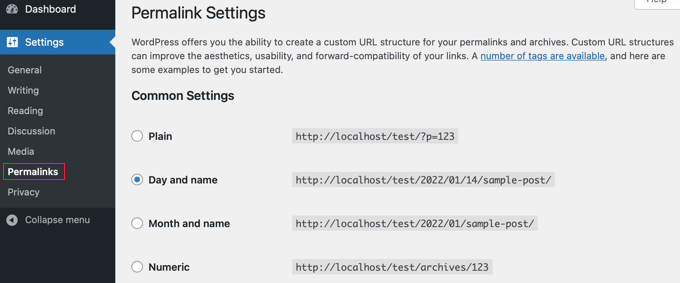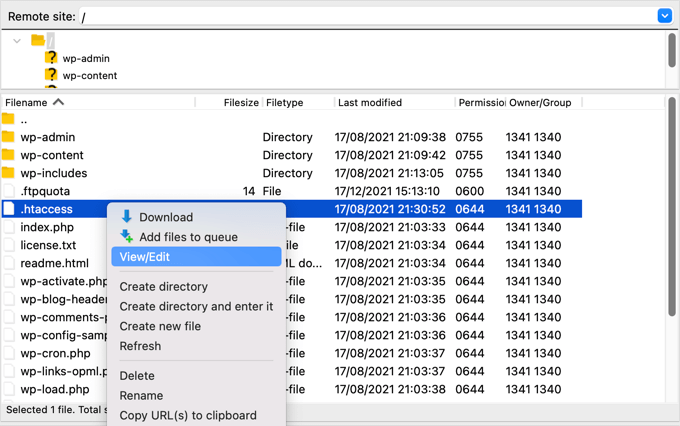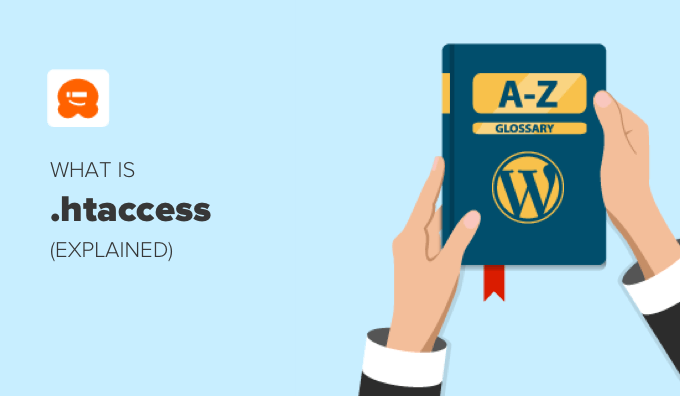The .htaccess file is a configuration file utilized by the Apache web server. This hidden file resides in the root directory of your website and contains directives that dictate the web server’s behavior.
WordPress automatically saves certain settings in the .htaccess file, while more experienced users have the option to edit it manually for website customization and troubleshooting purposes.
However, other web servers do not utilize .htaccess. For instance, if your WordPress hosting is with Nginx or Microsoft Windows Server, your site will lack a .htaccess file.
How WordPress Uses the .htaccess File
WordPress inherently saves certain configurations in the .htaccess file. One key function is its use of .htaccess for rewriting URLs to enhance readability for both users and search engines.
When you go to Settings » Permalinks and choose your blog’s URL structure, WordPress automatically updates the .htaccess file to accommodate your selected format.

Also, plugins such as W3 Total Cache will modify your .htaccess file in order to configure the caching and optimization tools that are part of the plugin.
How to Manually Configure the .htaccess File
Editing the .htaccess file by hand can be risky, as any incorrect configuration may result in significant server errors. It’s advisable to download a backup of your .htaccess file to your computer, providing a safety net in case something goes awry.
Occasionally, WordPress may fail to modify the .htaccess file and will prompt you to do it manually. Be sure to copy only the exact content provided by WordPress.
Additionally, check out our guide on essential .htaccess tricks for WordPress, where we share useful code snippets to customize your website. We demonstrate how to secure your WordPress admin area with a password, set up redirects, block suspicious IP addresses, and more.
Furthermore, a search for .htaccess on WPBeginner will yield numerous articles that guide you through editing .htaccess to enhance your site and address specific issues.
How to Access the .htaccess File
To access the .htaccess file, you’ll need to use an FTP client like FileZilla or the file manager option in your WordPress hosting control panel.
If you haven’t used FTP before, then you may want to see our guide on how to use FTP to upload files to WordPress.

You should locate the .htaccess file in the root directory of your WordPress site. However, this file might not appear in your FTP client initially, as files beginning with a period are treated as hidden by the server. To view these hidden files, make sure to enable the ‘show hidden files’ option in your FTP client.
If you still cannot find the .htaccess file, refer to our guide on locating it in WordPress. We hope this article has helped you understand more about .htaccess in WordPress.
Additionally, take a look at our Additional Reading list below for related articles filled with useful WordPress tips and ideas.
If you enjoyed this article, consider subscribing to our YouTube Channel for WordPress video tutorials. You can also connect with us on Twitter and Facebook.


